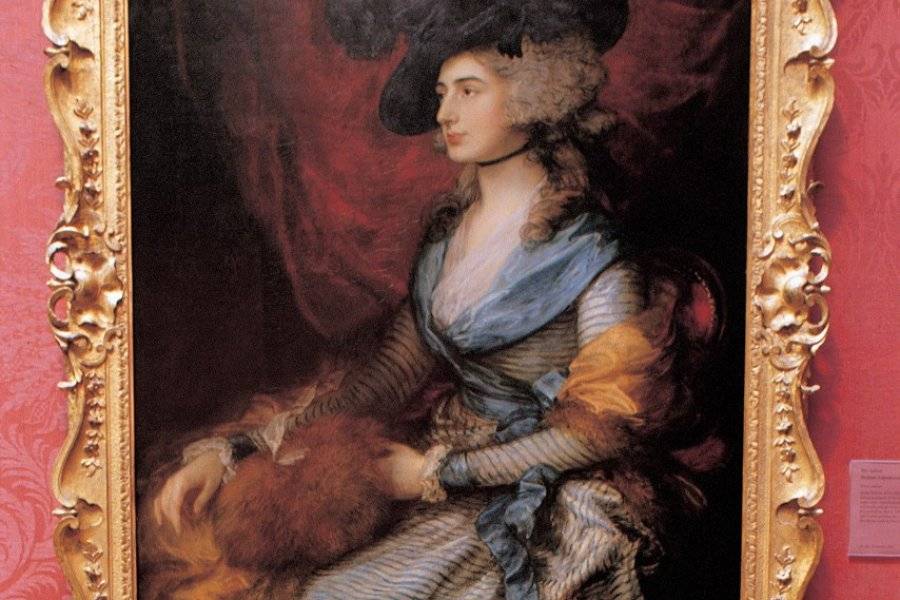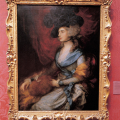North of Trafalgar Square, the museum, located in a large neoclassical building, houses one of the most beautiful collections of paintings in the world by Western European masters. Divided into four wings, the collections, more than 2,000 works, are chronologically classified: from the 13th to the 15th century, from the 16th to the 18th century and the 20th century.
Among the artists present, we can mention the Italian masters: Botticelli, Raphael, Michelangelo, Michelangelo, Leonardo da Vinci, Caravaggio; the Spaniards: El Greco, Velázquez, Goya; the English: Hogarth, Gainsborough, Turner; the French: Le Lorrain, Poussin, Watteau... Even if we advise you to take your time in one of the most beautiful museums in Europe, you may have to go to the essential for want of time. Here is a quick memo of the essentials so you don't miss a thing!
The Husbands Arnolfini by Jan Van Eyck. 1434. Room 56. This painting depicts a rich merchant and his wife, in a bourgeois interior meticulously detailed. While the issue of the wife's pregnancy has caused much ink to flow in the art history community, the curators at the National Gallery tend to dismiss this idea. It is a very beautiful rendering of the play of light and the miniaturization of details (reflections in the mirror).
The Baptism of Christ of Piero della Francesca. Around 1450. Room 66. This panel was the central element of a polyptych. It is one of the artist's first works.
Venus and Mars of Botticelli. Around 1485. Room 58. Mars, the god of war, was one of the lovers of Venus, the goddess of Love. The painting shows Mars asleep and unarmed beside Venus awake and alert, symbol of the Love that overcomes all. This work was probably intended to decorate a room.
The Virgin at the Rock of Leonardo da Vinci. Between 1491 and 1508. Room E. The work is commissioned by the brotherhood of the Milanese Immaculate Conception. If the painting does not seem to refer directly to the Immaculate Conception, it is typically in the style of subjects that Leonardo painted such as St. John the Baptist, themes that were then very popular.
The Burial of Michelangelo. 1501. Room 8. This unfinished painting shows the Christ carried to be placed in his tomb. The painting was a priori intended for the church of San Agostino in Rome and was never delivered. We recognize Michelangelo's style, which is similar to other works of the same period.
The Emmaus Supper of the Caravaggio. 1601. Room 32. On their way to Emmaus, two disciples of Jesus Christ met the risen Messiah without recognizing him. Christ is shown here during supper, when he breaks bread and the disciples realize who he is. Le Caravage innovates in the treatment of the subject, and the intensity of the characters is remarkable, accentuated by their gestures and expressions.
The Rokeby Venus of Velasquez. 1647-1651. Room 30. This is the only example we have of a female nude painted by Velázquez. Venus, goddess of Love, was considered as the personification of feminine beauty. She is shown here with her son Cupid. The work is surely a commission for the Marquis de Carpio, Prime Minister of Spain.
For the 18th, 19th and 20th centuries, don't miss Les Baigneurs à la grenouillère by Monet, Les Tournesols by Van Gogh, Le Dernier Voyage du Téméraire by Turner and La Charette de hoin by Constable.
Did you know? This review was written by our professional authors.
Members' reviews on NATIONAL GALLERY
The ratings and reviews below reflect the subjective opinions of members and not the opinion of The Little Witty.










**?" Great Excitement ???? ????????????❤️❤️????❤️????????❤️????????????????????????????